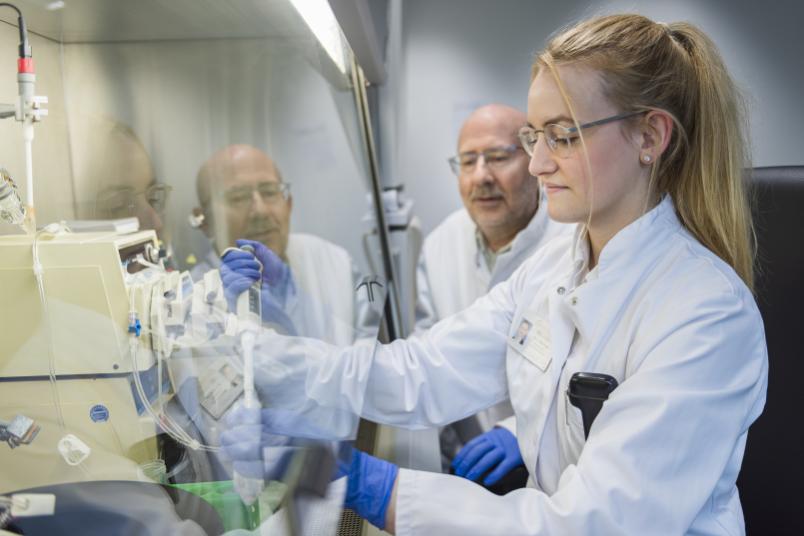
Experimental work with a special liver perfusion model: Tissue samples and perfusion fluid are collected at regular intervals to examine the liver's biorhythm.
Medicine
Mysteries between Light and Liver
People who work against their internal clock over a long period of time increase the risk of fatty liver. The correlations are complex, but one research team in Bochum is trying to get to the bottom of the issue.
“Artificial light is making us sick,” says Professor Mustafa Özçürümez. It allows us to turn night into day. We stay awake and eat late, sleep irregular hours, and mainly stay indoors. All of this derails our entire metabolism. In the worst case, if we disregard our internal clock for years or decades, this can lead to metabolic dysfunction-associated steatotic liver disease (formerly non-alcoholic fatty liver disease). Özçürümez and his team at the Knappschaft Kliniken Universitätsklinikum Bochum are working hard on tests to determine what exactly happens in the liver during this process. Rubin, the science magazine of Ruhr University Bochum, reports on the experiments.
When it no longer gets truly dark
Melatonin plays a key role in our day-night system. The hormone is released when it gets dark, making us tired and ensuring a relaxing slumber. One problem: Artificial blue light, such as that emitted by mobile phones, computers, televisions, and streetlights, make it difficult to achieve true darkness at night. “Even at ten lux, which is the light emitted at night during a full moon, it is more difficult for the body to produce melatonin,” warns Özçürümez.
He is investigating many other factors that influence our internal clock, such as the role of genetic predisposition. What exactly happens in the body depending on how we structure our day is the subject of an ongoing study for which participants are being sought. In it, the team is investigating the biorhythms of test subjects with and without fatty liver disease. Blood pressure and body temperature are continuously recorded over a 24-hour period, and blood and saliva samples are taken at various times to measure, among other things, melatonin levels and other laboratory values. In addition, the participants fill out questionnaires about their activities, their sleeping habits, and their time spent indoors and outdoors. Afterwards, they wear light sensors for two weeks that precisely record how much light, both natural and artificial, reaches the eyes at what time of day.
In order to be able to break down the processes in the liver even more precisely, the team has developed an experimental setup in which they can artificially maintain pig livers outside the body in a nutrient solution, allowing them to study metabolic processes under controlled conditions.
Detailed article in Rubin